Effect of Water Environment on Fatigue Behavior in X80 High Strength Steel CO2 Arc Welding Welded Joint
Abstract
1. Introduction
2. Materials and Methods
2.1. Materials and Sampling Methods
2.2. Fatigue Tests
2.3. Microscopic Morphology Observation
3. Results and Discussions
3.1. Fatigue Life Tests and Crack Initiation Analysis
3.2. Fatigue Crack Growth Rate Tests and Acceleration Mechanism
3.3. Crack Propagation Path and Deformation Structure Analysis
4. Conclusions
- Fatigue life of X80 steel welded joints in the water environment is typically lower than that in air when the same stress level was loaded.
- Oxide particles induced by the water environment gradually formed the fatigue crack initiation site and decreased the fatigue life of the X80 pipeline steel welded joint.
- Crack growth rate does not differ much in the water environment when the SIF range is limited within a certain level and it is much higher than that in air when the SIF range exceeds 52 MPa·m1/2.
- The preferred grain orientation of <001>//ND and CSL boundaries of Σ3, Σ11, Σ13c, Σ17b, Σ25a, and Σ25b are both prone to fatigue propagation when loading in the water environment.
- The coalescence of the SIF range and water plays an active role in accelerating FCGR by motivating secondary slip systems of {112}<111> and {123}<111> in bcc crystalline structures.
Author Contributions
Funding
Institutional Review Board Statement
Informed Consent Statement
Data Availability Statement
Conflicts of Interest
References
- Yu, M.S.; Xing, X.; Zhang, H.; Zhao, J.X.; Eadie, R.; Chen, W.X. Corrosion fatigue crack growth behavior of pipeline steel under underload-type variable amplitude loading schemes. Acta Mater. 2015, 96, 159–169. [Google Scholar] [CrossRef]
- Seifert, H.P.; Ritter, S.; Leber, H.J. Corrosion fatigue crack growth behaviour of austenitic stainless steels under light water reactor conditions. Corros. Sci. 2012, 55, 61–75. [Google Scholar] [CrossRef]
- Askari, M.; Aliofkhazraei, M.; Afroukhteh, S. A comprehensive review on internal corrosion and cracking of oil and gas pipelines. J. Nat. Gas Sci. Eng. 2019, 71, 102971. [Google Scholar] [CrossRef]
- Zhao, T.L.; Liu, Z.Y.; Du, C.W.; Dai, C.D.; Li, X.G.; Zhang, B.W. Corrosion fatigue crack initiation and initial propagation mechanism of E690 steel in simulated seawater. Mater. Sci. Eng. A 2017, 708, 181–192. [Google Scholar] [CrossRef]
- Cheng, A.K.; Chen, N.Z. Corrosion fatigue crack growth modelling for subsea pipeline steels. Ocean Eng. 2017, 142, 10–19. [Google Scholar] [CrossRef]
- Cheng, A.K.; Chen, N.Z. Fatigue crack growth modelling for pipeline carbon steels under gaseous hydrogen conditions. Int. J. Fatigue 2017, 96, 152–161. [Google Scholar] [CrossRef]
- Griggs, J.; Gamboa, E.; Lavigne, O. A review of modelling high pH stress corrosion cracking of high pressure gas pipelines. Mater. Corros. 2016, 67, 251–263. [Google Scholar] [CrossRef]
- Woodtli, J.; Kieselbach, R. Damage due to hydrogen embrittlement and stress corrosion cracking. Eng. Fail. Anal. 2000, 7, 427–450. [Google Scholar] [CrossRef]
- Fang, B.Y.; Atrens, A.; Wang, J.Q.; Han, E.H.; Zhu, Z.Y.; Ke, W. Review of stress corrosion cracking of pipeline steels in “low” and “high” pH solutions. J. Mater. Sci. 2003, 38, 127–132. [Google Scholar] [CrossRef]
- Shipilov, S.A. Mechanisms for corrosion fatigue crack propagation. Fatigue Fract. Eng. Mater. Struct. 2002, 25, 243–259. [Google Scholar] [CrossRef]
- Krenn, C.R.; Morris, J.W. The compatibility of crack closure and Kmax dependent models of fatigue crack growth. Int. J. Fatigue 1999, 21, 147–155. [Google Scholar] [CrossRef]
- Fassina, P.; Brunella, F.; Lazzari, L.; Re, G.; Vergani, L.; Sciuccati, A. Fatigue behavior of pipeline steel under hydrogen environment and low temperature. Procedia Eng. 2011, 10, 3345–3352. [Google Scholar] [CrossRef]
- Wang, J.; Ma, J.; Liu, Y.; Zhang, T.; Wu, S.; Sun, Q. Influence of Heat Input on Microstructure and Corrosion Resistance of Underwater Wet-Welded E40 Steel Joints. J. Mater. Eng. Perform. 2020, 29, 6987–6996. [Google Scholar] [CrossRef]
- Tomków, J.; Fydrych, D.; Rogalski, G. Dissimilar underwater wet welding of HSLA steels. Int. J. Adv. Manuf. Technol. 2020, 109, 717–725. [Google Scholar] [CrossRef]
- Moreno-Uribe, A.M.; Bracarense, A.Q.; Pessoa, E.C.P. The effect of polarity and hydrostatic pressure on operational characteristics of rutile electrode in underwater welding. Materials 2020, 13, 5001. [Google Scholar] [CrossRef] [PubMed]
- Tomków, J.; Janeczek, A.; Rogalski, G.; Wolski, A. Underwater local cavity welding of s460n steel. Materials 2020, 13, 5535. [Google Scholar] [CrossRef] [PubMed]
- American Welding Society (AWS). Specification for Low-Alloy. Steel Electrodes for Flux Cored Arc Welding (AWSA5.29/A5.29M:2005), 4th ed.; American Welding Society: Miami, FL, USA, 2005. [Google Scholar]
- ASTM E468–90. Standard Practice for Presentation of Constant Amplitude Fatigue Tests Results for Metallic Materials; American Society for Testing and Materials: West Conshohocken, PA, USA, 2004. [Google Scholar]
- ASTM International. Standard Test. Method for Measurement of Fatigue Crack Growth Rates, ASTM E647-15; ASTM International: West Conshohocken, PA, USA, 2011. [Google Scholar]
- Alvar, A.; Wan, D.; Olden, V.; Barnoush, A. Hydrogen enhanced fatigue crack growth rates in a ferritic Fe-3 wt%Si alloy and a X70 pipeline steel. Eng. Fract. Mech. 2019, 219, 106641. [Google Scholar] [CrossRef]
- Zhao, W.M.; Wang, Y.X.; Zhang, T.M.; Wang, Y. Study on the mechanism of high-cycle corrosion fatigue crack initiation in X80 steel. Corros. Sci. 2012, 57, 99–103. [Google Scholar] [CrossRef]
- Paris, P.; Erdogan, F. A critical analysis of crack propagation laws. J. Basic Eng. 1963, 85, 528–533. [Google Scholar] [CrossRef]
- Mohtadi-Bonab, M.A.; Szpunar, J.A.; Collins, L.; Stankievech, R. Evaluation of hydrogen induced cracking behavior of API X70 pipeline steel at different heat treatments. Int. J. Hydrog. Energy 2014, 39, 6076–6088. [Google Scholar] [CrossRef]
- Mohtadi-Bonab, M.A.; Eskandari, M.; Rahman, K.M.M.; Ouellet, R.; Szpunar, J.A. An extensive study of hydrogen-induced cracking susceptibility in an API X60 sour service pipeline steel. Int. J. Hydrog. Energy 2016, 41, 4185–4197. [Google Scholar] [CrossRef]
- Zhang, S.Q.; Fan, E.D.; Wan, J.F.; Liu, J.; Huang, Y.H.; Li, X.G. Effect of Nb on the hydrogen-induced cracking of high-strength low-alloy steel. Corros. Sci. 2018, 139, 83–96. [Google Scholar] [CrossRef]
- Masoumi, M.; Silva, C.C.; de Abreu, H.F.G. Effect of crystallographic orientations on the hydrogen-induced cracking resistance improvement of API 5L X70 pipeline steel under various thermomechanical processing. Corros. Sci. 2016, 111, 121–131. [Google Scholar] [CrossRef]
- Konijnenberg, P.J.; Zaefferer, S.; Raabe, D. Assessment of geometrically necessary dislocation levels derived by 3D EBSD. Acta Mater. 2015, 99, 402–414. [Google Scholar] [CrossRef]
- Maitland, T.; Sitzman, S. Backscattering Detector and EBSD in Nanomaterials Characterization. In Scanning Microscopy for Nanotechnology: Techniques and Applications; Springer: New York, NY, USA, 2006; pp. 41–75. [Google Scholar]
- Masoumi, M.; Santos, L.P.M.; Bastos, I.N.; Tavares, S.S.M.; da Silva, M.J.G.; de Abreu, H.F.G. Texture and grain boundary study in high strength Fe-18Ni-Co steel related to hydrogen embrittlement. Mater. Des. 2016, 91, 90–97. [Google Scholar] [CrossRef]
- Shekhar, S.; King, A.H. Strain fields and energies of grain boundary triple junctions. Acta Mater. 2008, 56, 5728–5736. [Google Scholar] [CrossRef]
- Eskandari, M.; Yadegari-Dehnavi, M.R.; Zarei-Hanzaki, A.; Mohtadi-Bonab, M.A.; Basu, R.; Szpunar, J.A. In-situ strain localization analysis in low density transformation-twinning induced plasticity steel using digital image correlation. Opt. Lasers Eng. 2015, 67, 1–16. [Google Scholar] [CrossRef]
- Cui, X.; Zhang, S.; Wang, C.; Zhang, C.H.; Chen, J.; Zhang, J.B. Microstructure and fatigue behavior of a laser additive manufactured 12CrNi2 low alloy steel. Mater. Sci. Eng. A 2020, 772, 138685. [Google Scholar] [CrossRef]
- Jiang, Y.B.; Li, C.N.; Di, X.J.; Wang, D.P.; Liu, J.C. EBSD analysis of microstructures and mechanical properties of softened zones in X60 reeled-pipeline welded joint after cyclic plastic deformation. Weld. World 2020, 64, 1213–1225. [Google Scholar] [CrossRef]
- Azar, A.S.; Svensson, L.E.; Nyhus, B. Effect of crystal orientation and texture on fatigue crack evolution in high strength steel welds. Int. J. Fatigue 2015, 77, 95–104. [Google Scholar] [CrossRef]
- Sasaoka, S.; Arakawa, J.; Akebono, H.; Sugeta, A.; Shirai, Y.; Nakayama, E. The effects of crystallographic orientation on fatigue crack initiation behavior in Ti-6Al-4V. Int. J. Fatigue 2018, 117, 371–383. [Google Scholar] [CrossRef]
- Birosca, S. The deformation behaviour of hard and soft grains in RR1000 nickel-based superalloy. IOP Conf. Ser. Mater. Sci. Eng. 2015, 82, 15–21. [Google Scholar] [CrossRef]
- Nakai, Y.; Saka, M.; Yoshida, H.; Asayama, K.; Kikuchi, S. Fatigue crack initiation site and propagation paths in high-cycle fatigue of magnesium alloy AZ31. Int. J. Fatigue 2019, 123, 248–254. [Google Scholar] [CrossRef]

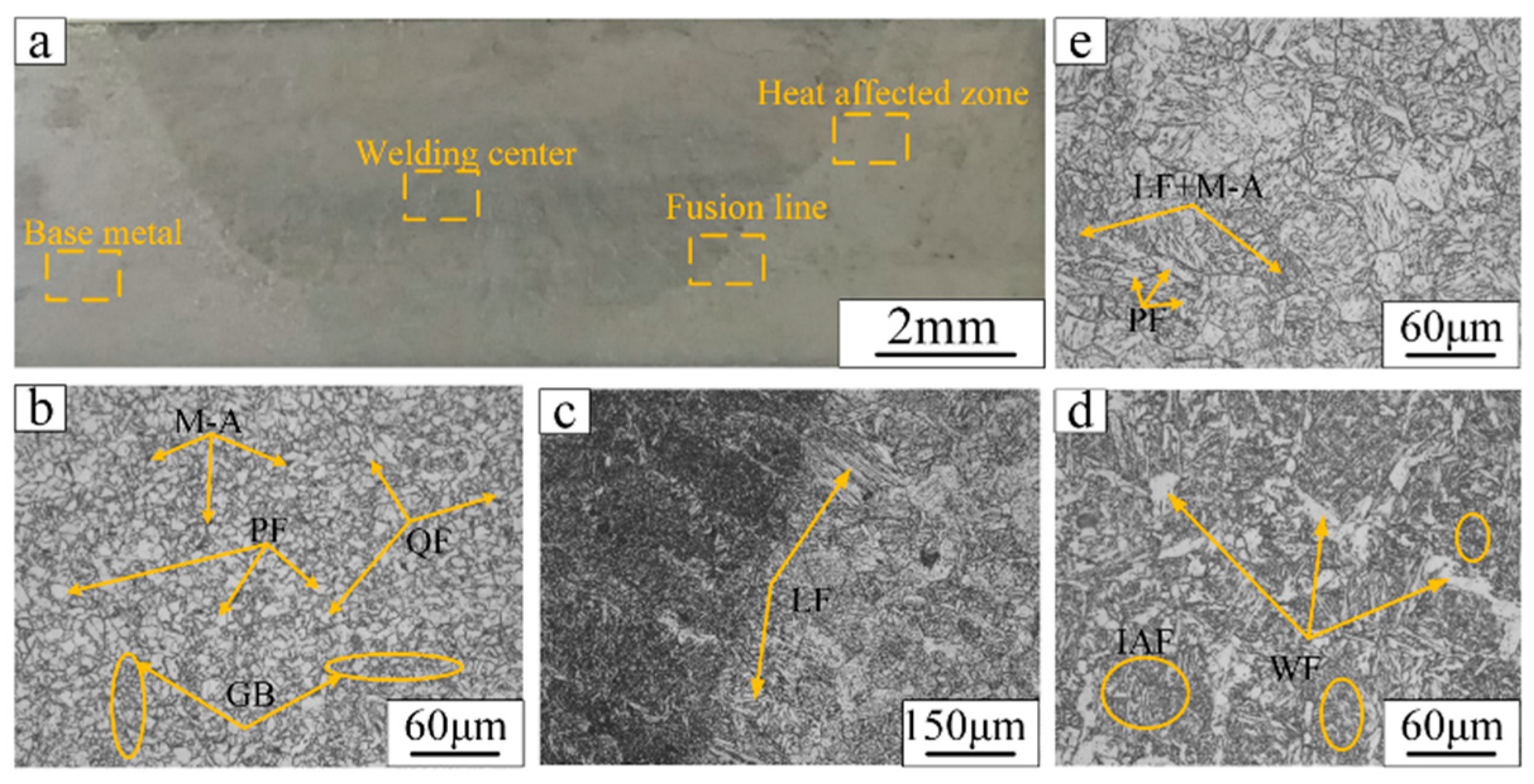


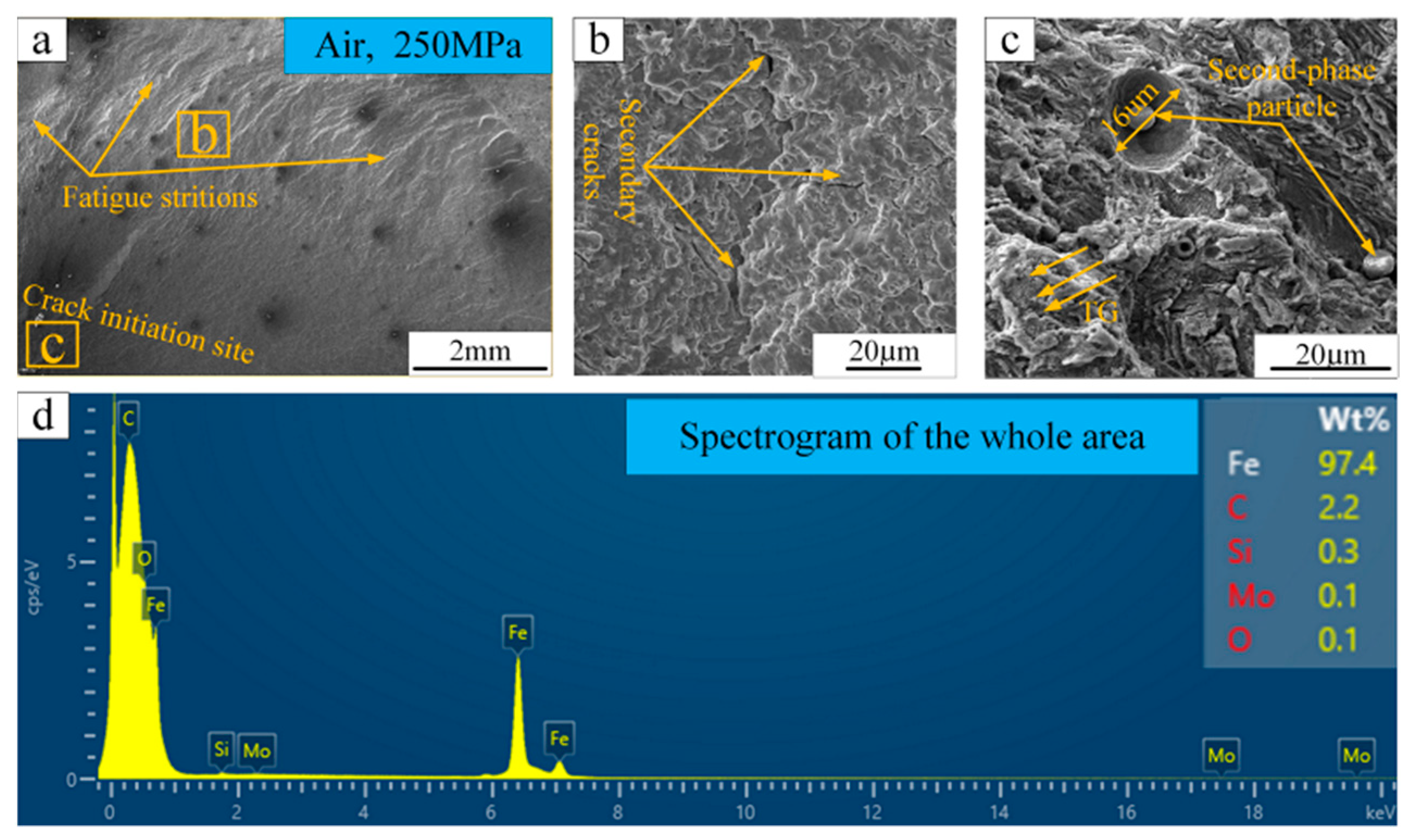
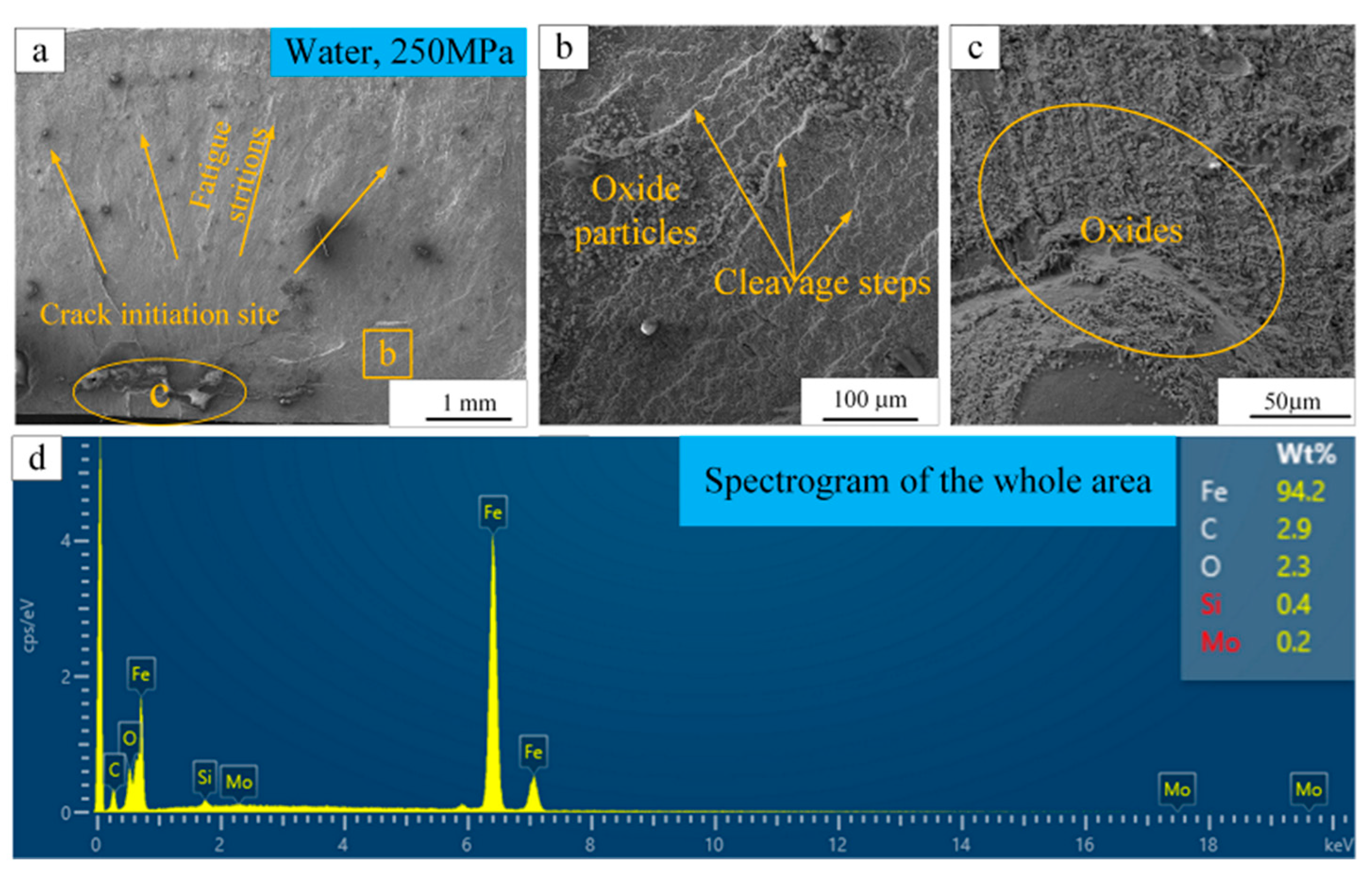
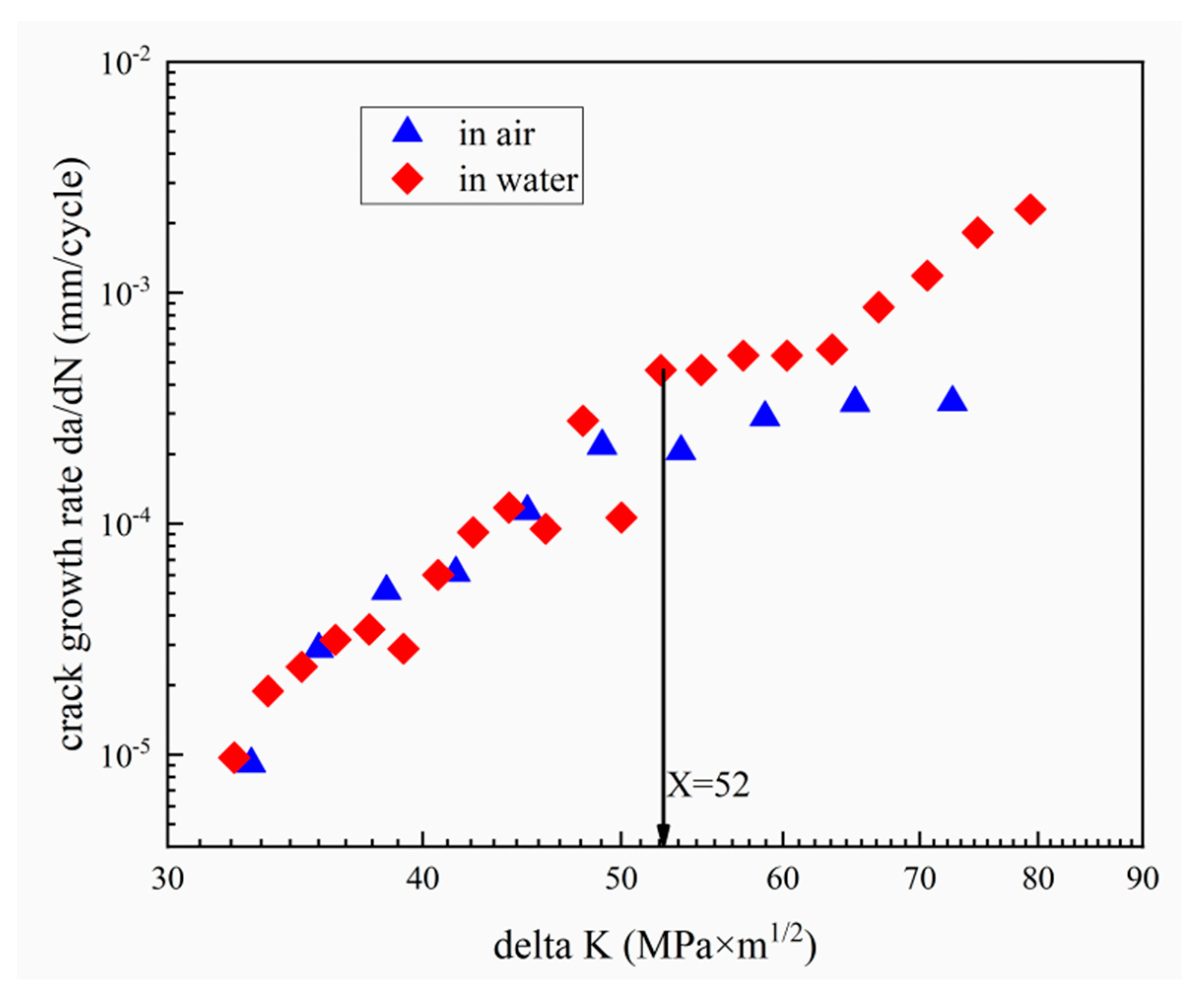
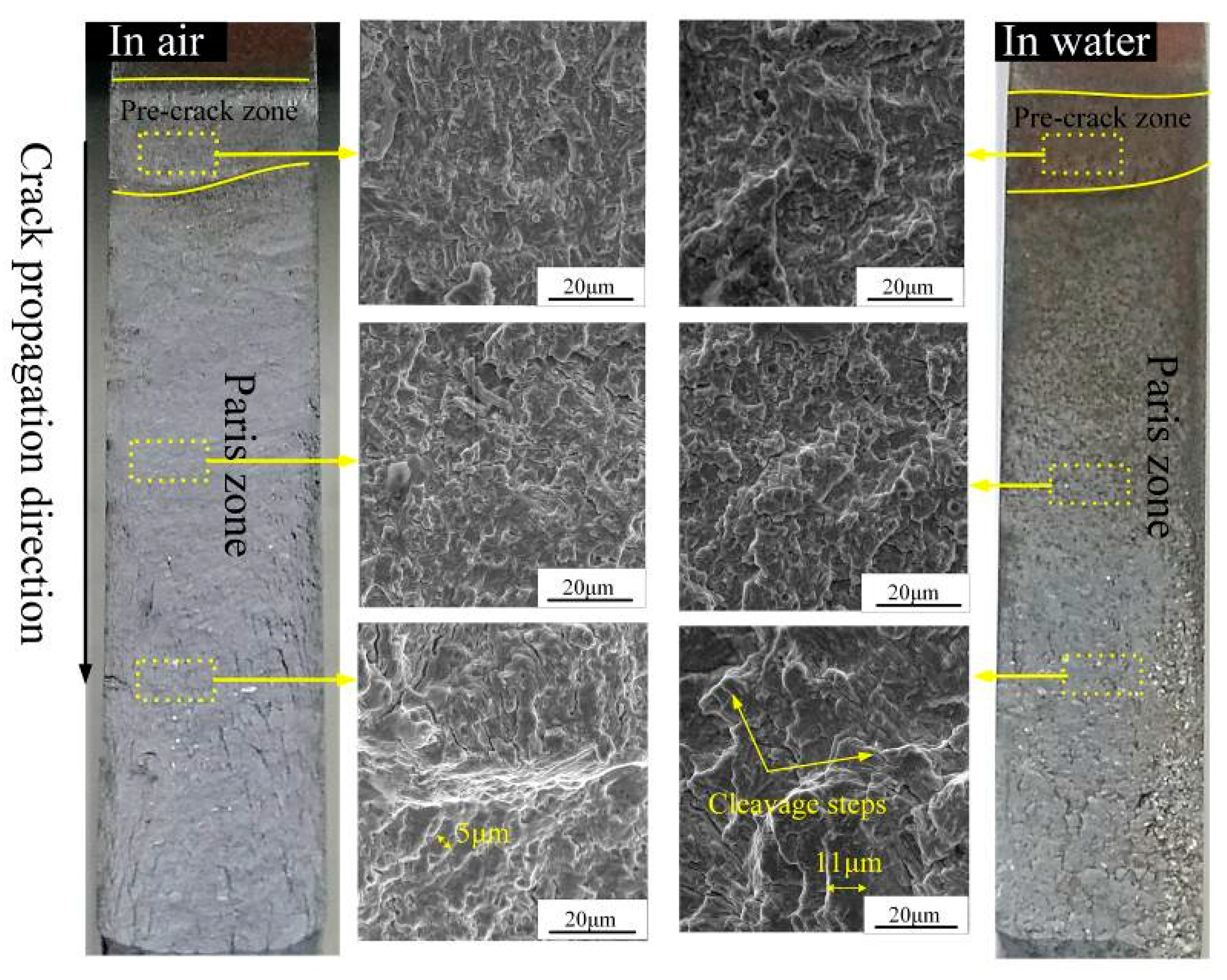
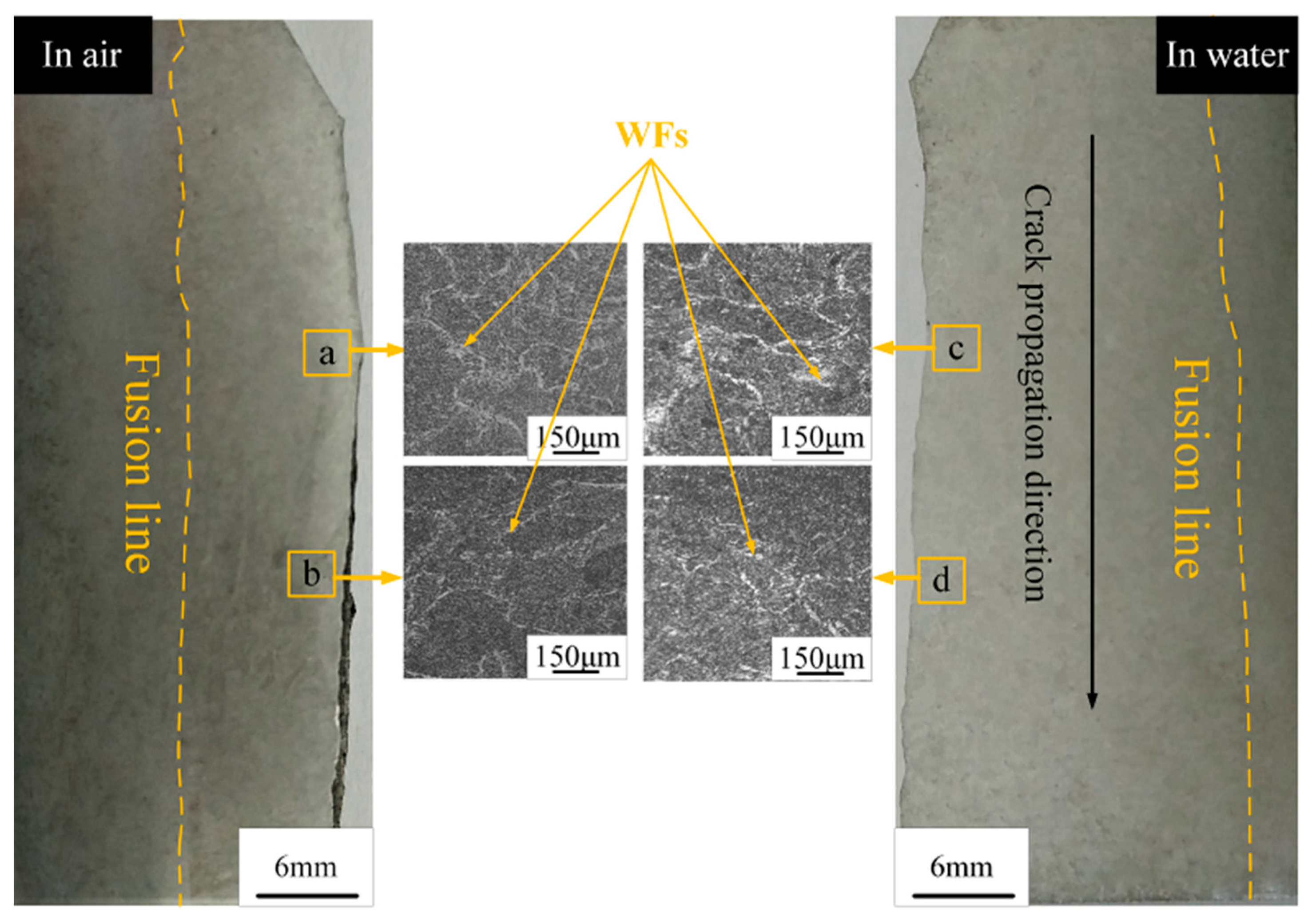
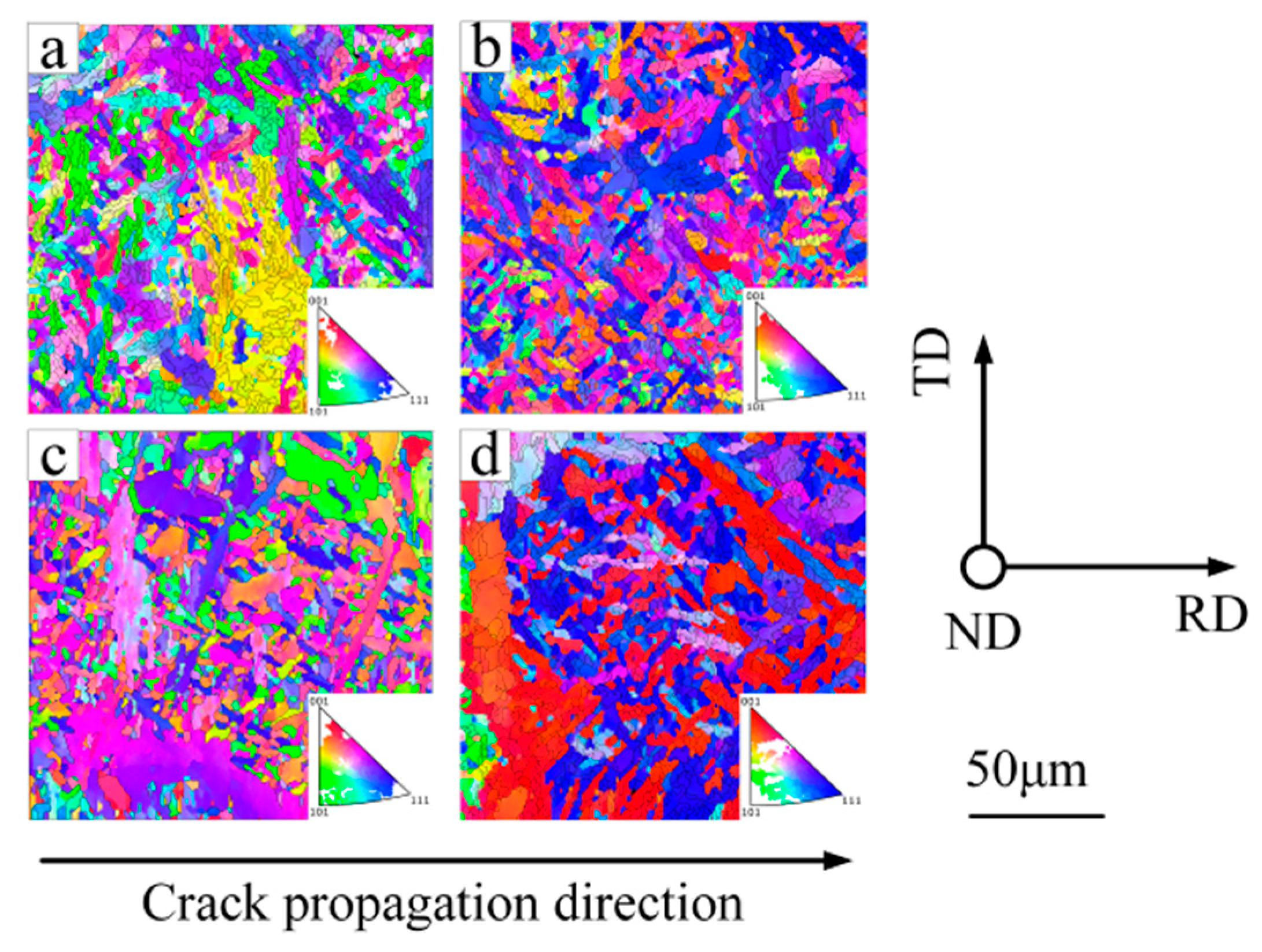
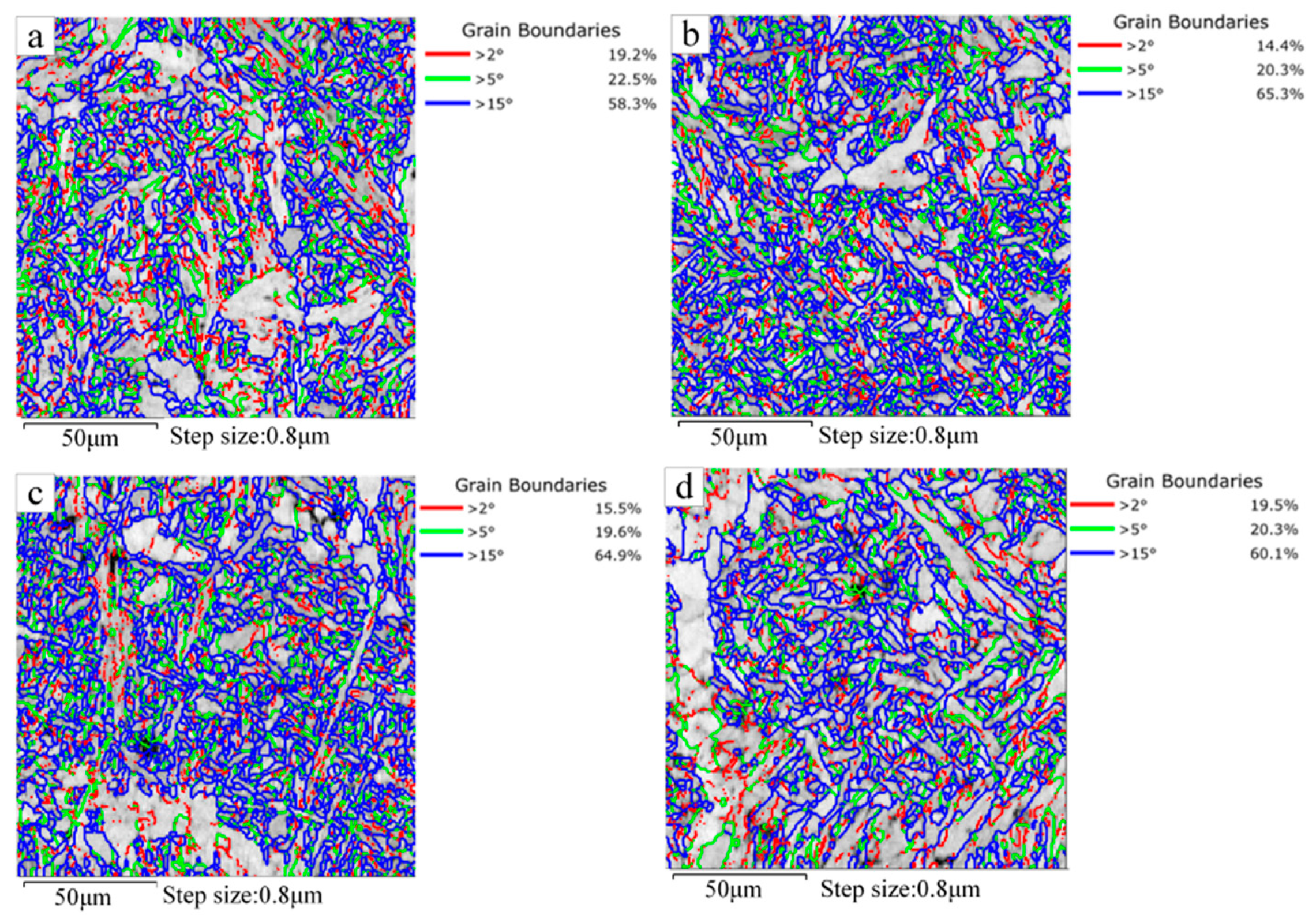
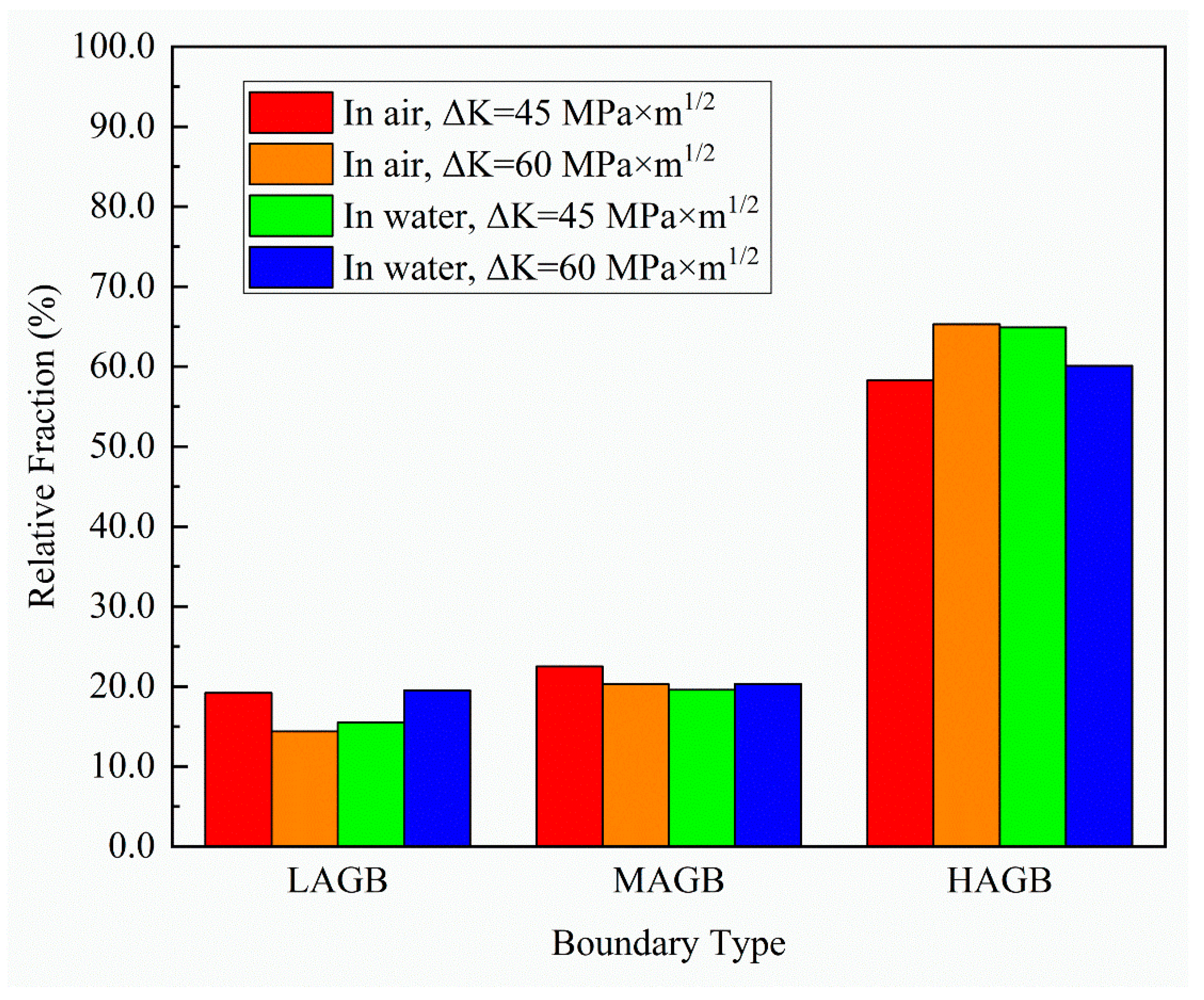
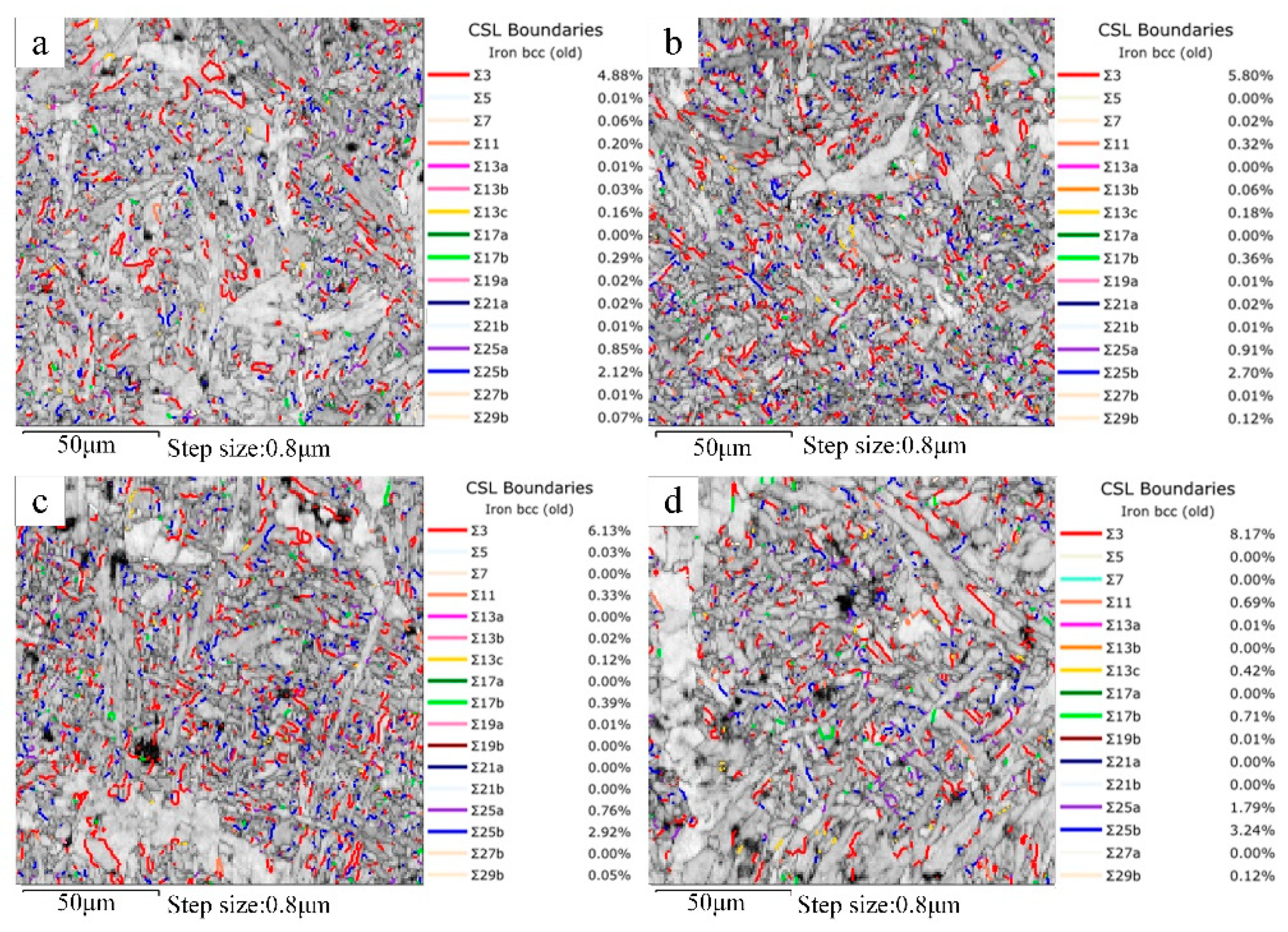
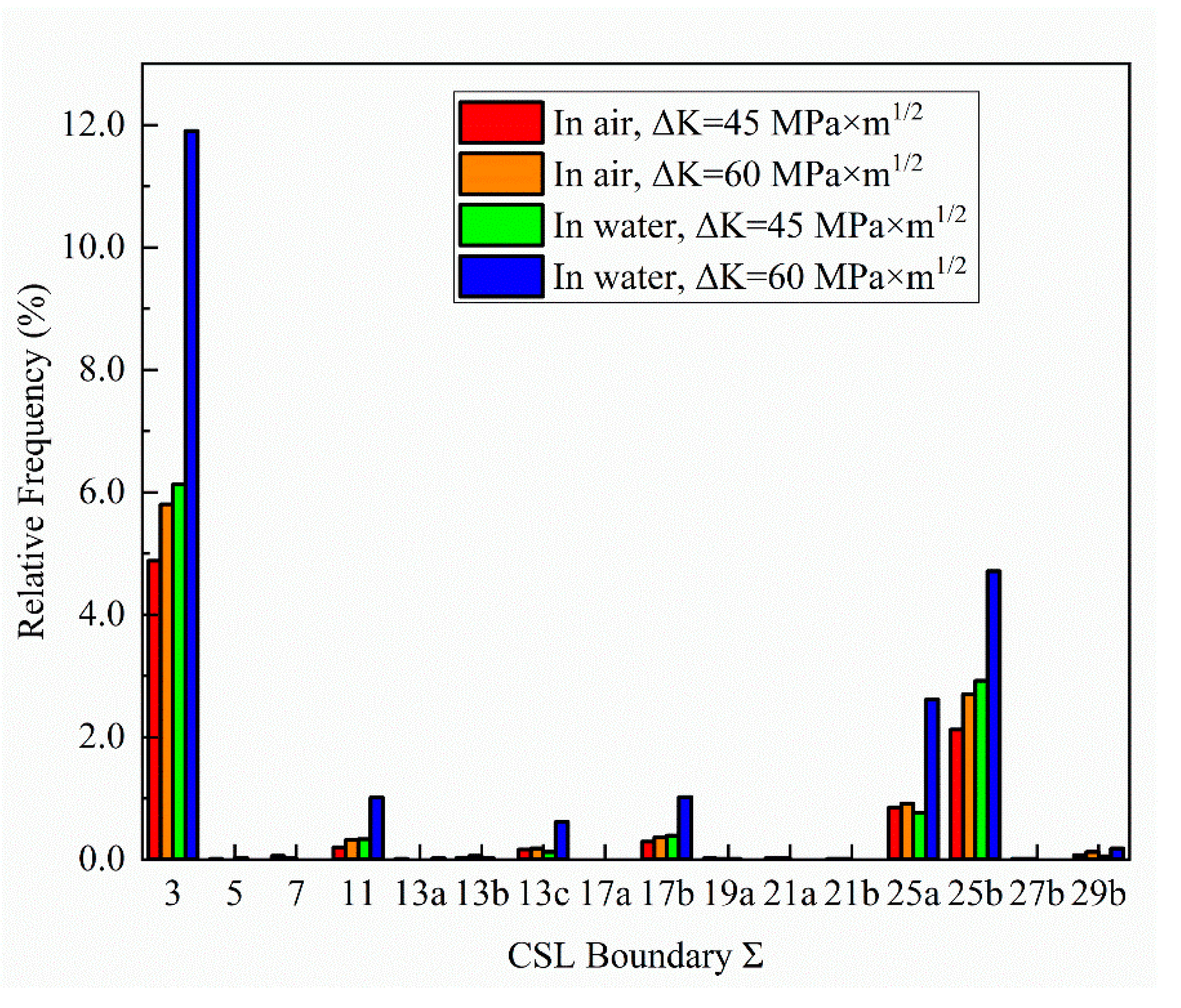
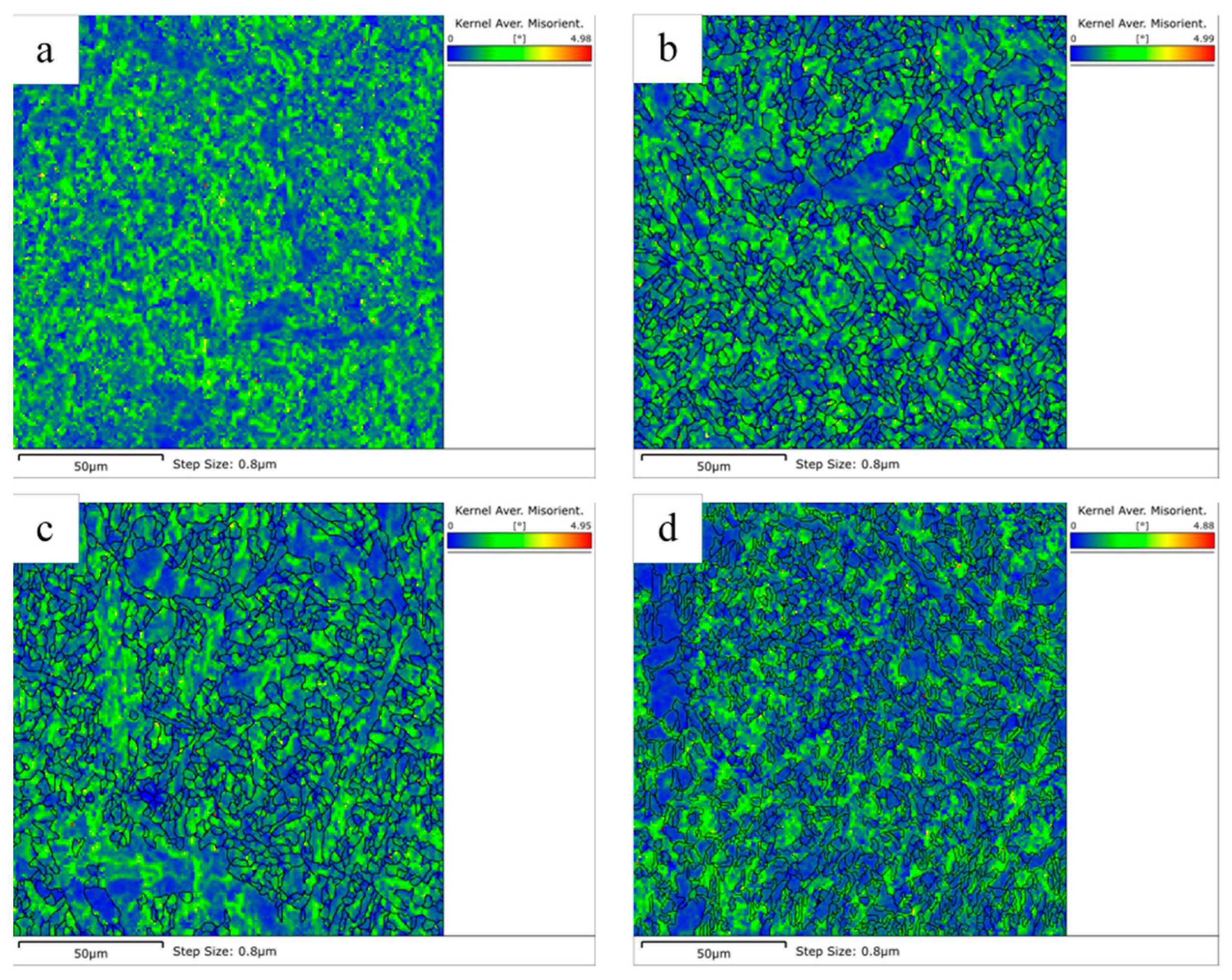
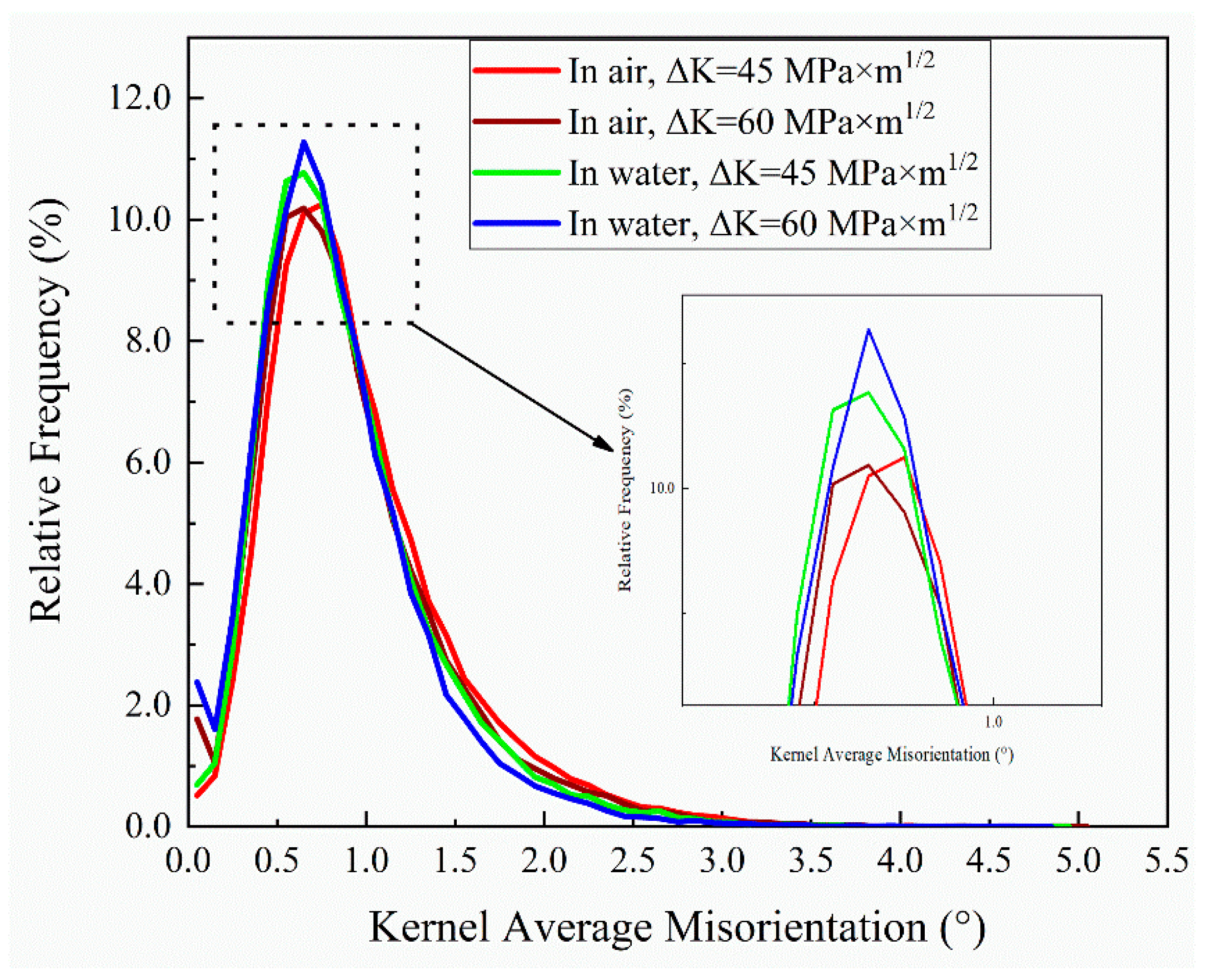
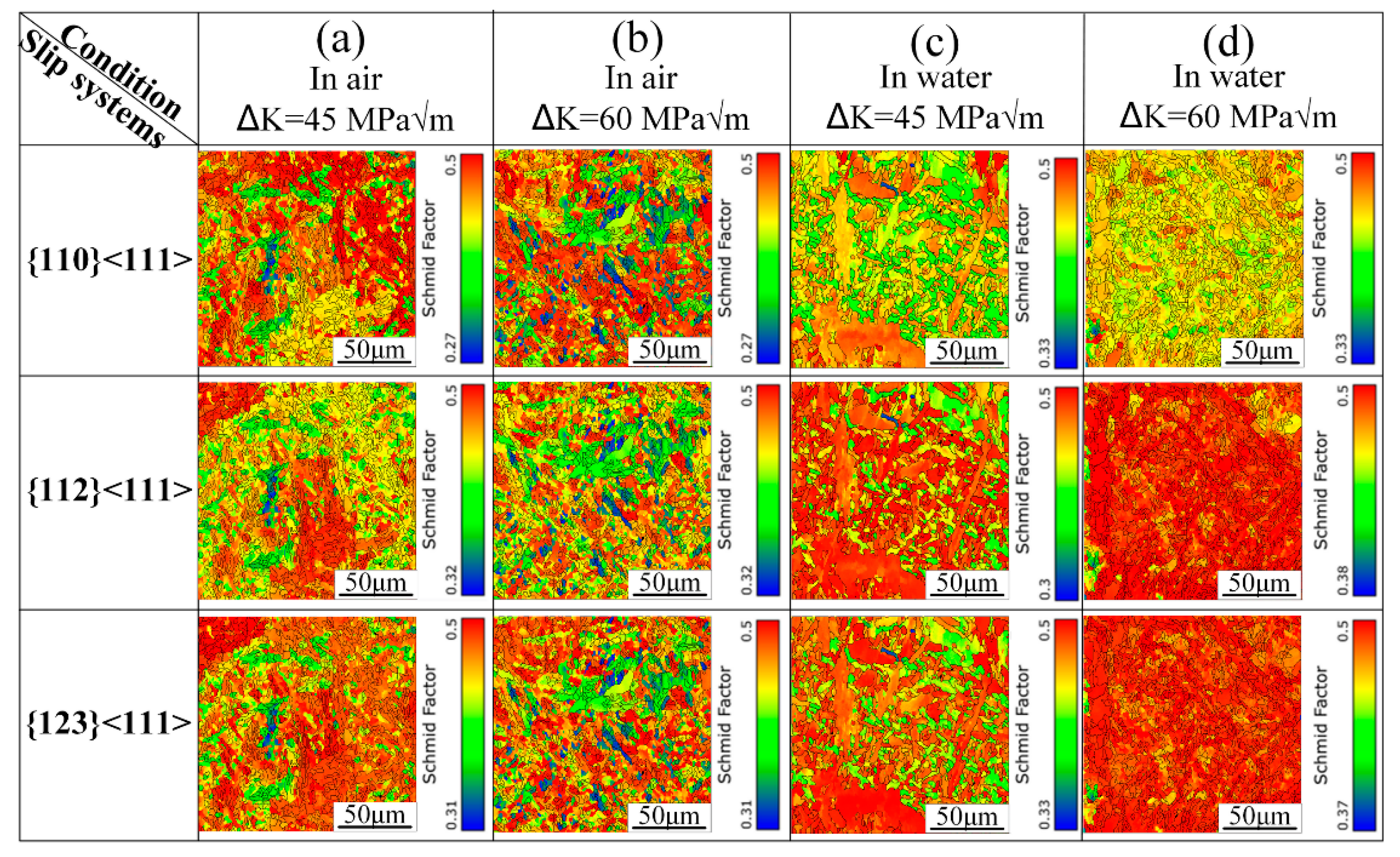
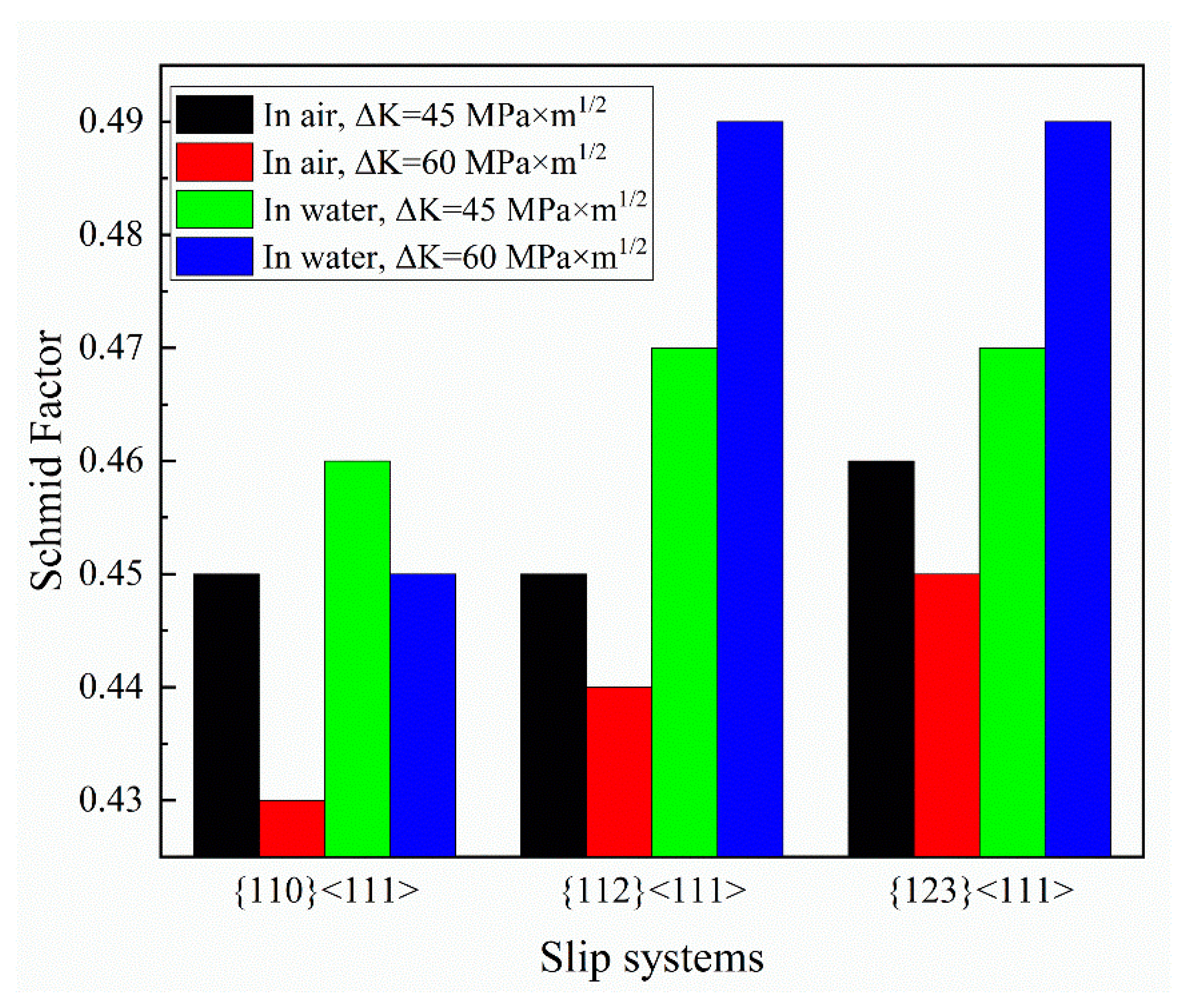
| Materials | C | Si | S | P | Mn | Ni | Mo | Nb | Ti | V | Fe |
|---|---|---|---|---|---|---|---|---|---|---|---|
| X80 E91T1-GM | 0.07 0.05 | 0.24 0.40 | 0.003 ≤0.015 | 0.016 ≤0.015 | 0.17 1.30 | 0.32 0.85 | 0.006 0.28 | 0.07 0.01 | 0.018 - | 0.01 - | balance |
Publisher’s Note: MDPI stays neutral with regard to jurisdictional claims in published maps and institutional affiliations. |
© 2021 by the authors. Licensee MDPI, Basel, Switzerland. This article is an open access article distributed under the terms and conditions of the Creative Commons Attribution (CC BY) license (http://creativecommons.org/licenses/by/4.0/).
Share and Cite
Zhao, X.; Liu, G.; Xu, D.; Hu, C.; Liu, Y. Effect of Water Environment on Fatigue Behavior in X80 High Strength Steel CO2 Arc Welding Welded Joint. Metals 2021, 11, 136. https://doi.org/10.3390/met11010136
Zhao X, Liu G, Xu D, Hu C, Liu Y. Effect of Water Environment on Fatigue Behavior in X80 High Strength Steel CO2 Arc Welding Welded Joint. Metals. 2021; 11(1):136. https://doi.org/10.3390/met11010136
Chicago/Turabian StyleZhao, Xiaohui, Gen Liu, Desheng Xu, Chunhua Hu, and Yu Liu. 2021. "Effect of Water Environment on Fatigue Behavior in X80 High Strength Steel CO2 Arc Welding Welded Joint" Metals 11, no. 1: 136. https://doi.org/10.3390/met11010136
APA StyleZhao, X., Liu, G., Xu, D., Hu, C., & Liu, Y. (2021). Effect of Water Environment on Fatigue Behavior in X80 High Strength Steel CO2 Arc Welding Welded Joint. Metals, 11(1), 136. https://doi.org/10.3390/met11010136






